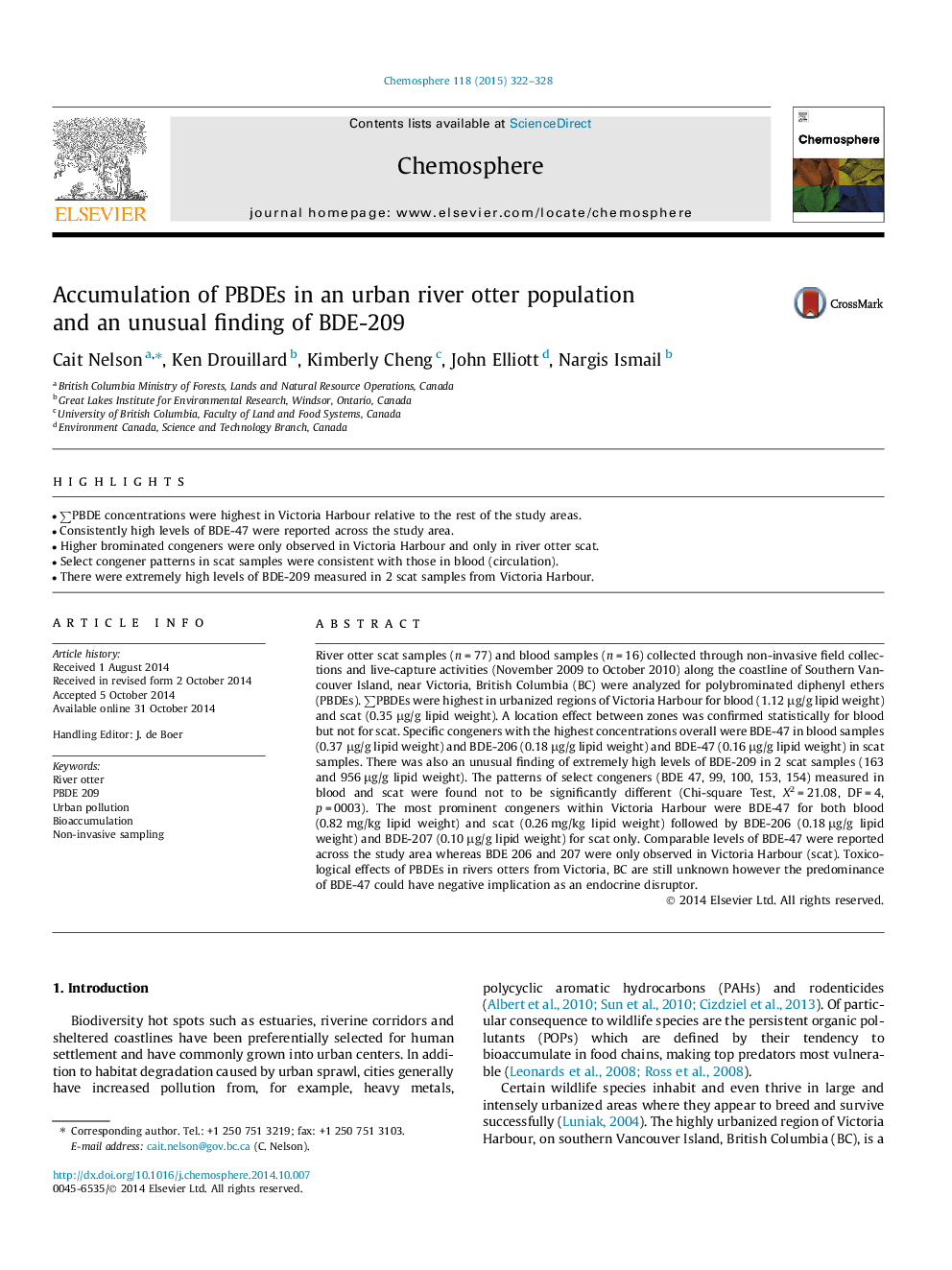| Article ID | Journal | Published Year | Pages | File Type |
|---|---|---|---|---|
| 6308381 | Chemosphere | 2015 | 7 Pages |
â¢âPBDE concentrations were highest in Victoria Harbour relative to the rest of the study areas.â¢Consistently high levels of BDE-47 were reported across the study area.â¢Higher brominated congeners were only observed in Victoria Harbour and only in river otter scat.â¢Select congener patterns in scat samples were consistent with those in blood (circulation).â¢There were extremely high levels of BDE-209 measured in 2 scat samples from Victoria Harbour.
River otter scat samples (n = 77) and blood samples (n = 16) collected through non-invasive field collections and live-capture activities (November 2009 to October 2010) along the coastline of Southern Vancouver Island, near Victoria, British Columbia (BC) were analyzed for polybrominated diphenyl ethers (PBDEs). âPBDEs were highest in urbanized regions of Victoria Harbour for blood (1.12 μg/g lipid weight) and scat (0.35 μg/g lipid weight). A location effect between zones was confirmed statistically for blood but not for scat. Specific congeners with the highest concentrations overall were BDE-47 in blood samples (0.37 μg/g lipid weight) and BDE-206 (0.18 μg/g lipid weight) and BDE-47 (0.16 μg/g lipid weight) in scat samples. There was also an unusual finding of extremely high levels of BDE-209 in 2 scat samples (163 and 956 μg/g lipid weight). The patterns of select congeners (BDE 47, 99, 100, 153, 154) measured in blood and scat were found not to be significantly different (Chi-square Test, X2 = 21.08, DF = 4, p = 0003). The most prominent congeners within Victoria Harbour were BDE-47 for both blood (0.82 mg/kg lipid weight) and scat (0.26 mg/kg lipid weight) followed by BDE-206 (0.18 μg/g lipid weight) and BDE-207 (0.10 μg/g lipid weight) for scat only. Comparable levels of BDE-47 were reported across the study area whereas BDE 206 and 207 were only observed in Victoria Harbour (scat). Toxicological effects of PBDEs in rivers otters from Victoria, BC are still unknown however the predominance of BDE-47 could have negative implication as an endocrine disruptor.
